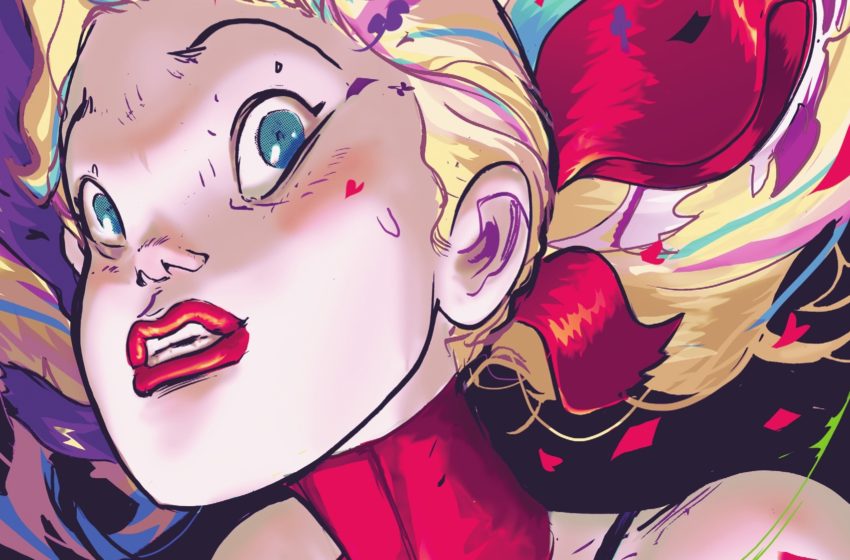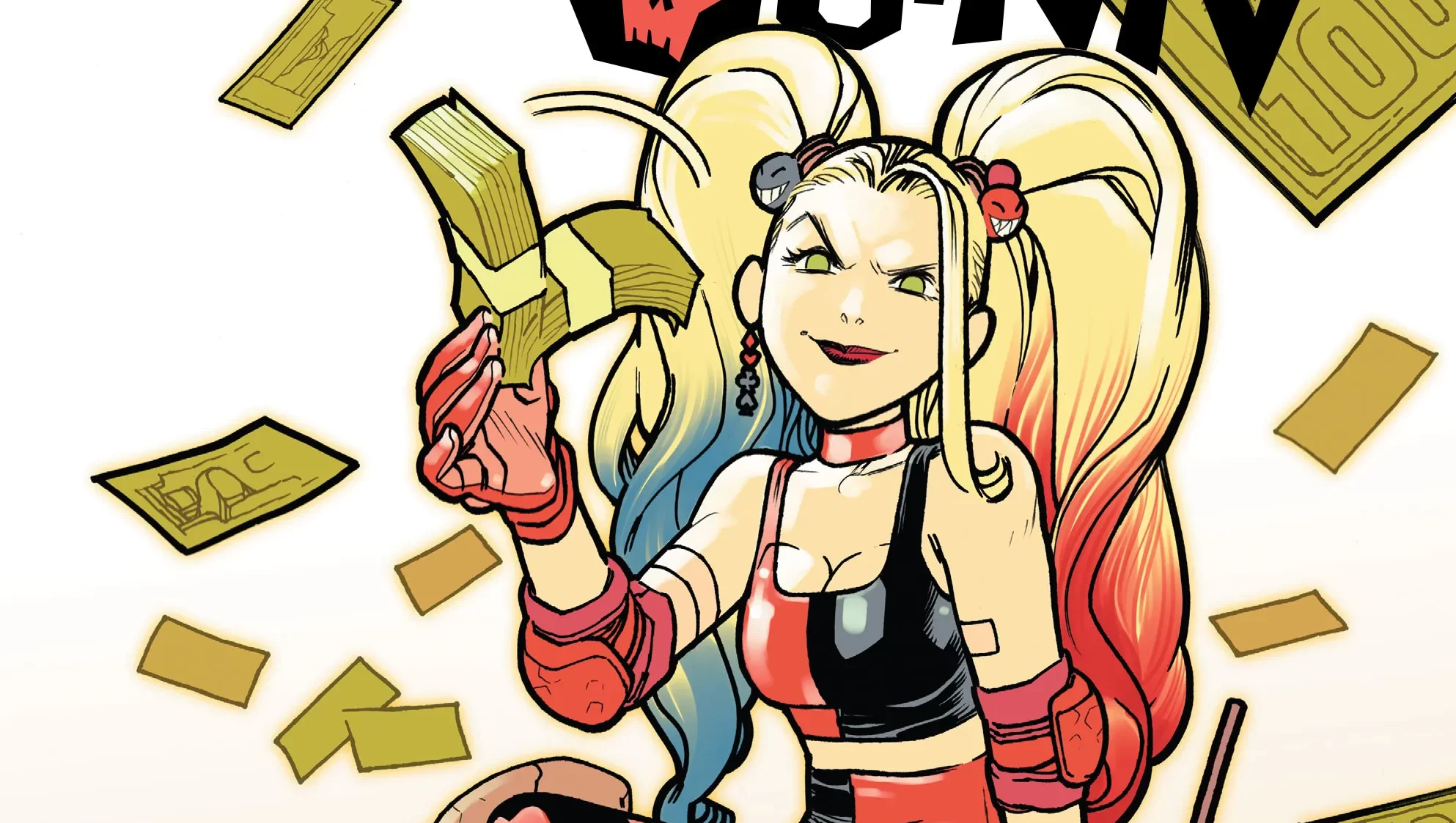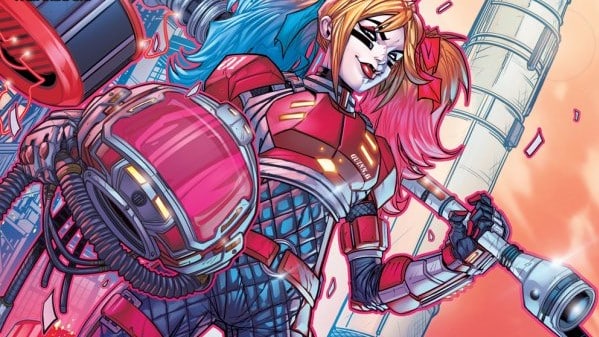Doing her best to make up for past sins, Harley is attempting to rehabilitate those who participated in the violence of the Joker War with a support group. Unfortunately for her, Hugo Strange and his underlings believe all clowns – former or otherwise – ought to be locked up, and placed under his dangerous and highly experimental “care”. Harley’s first meeting goes more disastrously than even she could have predicted in Harley Quinn #3 is written by Stephanie Philips, art by Riley Rossmo, colored by Ivan Plascencia and lettered by AndWorld Design.
Whenever there’s a new creative team, it can sometimes take a few issues before things truly click into place, and for me, Harley Quinn #3 is that issue where things click. I’ve enjoyed the artwork from the get go, but have had some minor quibbles with the writing: the step back for Harley in terms of character development, or her tendency to talk more about her psychology background than showing any insights with which to back it up.
Despite all that, I was charmed by this new Harley: vulnerable, raw, tangled up in her history but determined to forge something new. Then she starts talking about a macabre 19th century doctor who wanted to know where smiles come from and for the first time, I’m not just reading the story for the fun it’s having – I’m hooked by the premise it’s offering.
Harley’s inner monologue this issue guides us from one story beat to the next to talk about the different smiles that people show us. From the crazed smile of Hugo Strange as he tortures a clown-tattooed patient for unexplained but nefarious experimentations, to the pity smile Harley receives from Kevin when he believes no one’s going to show up for Harley’s support group.
I love seeing support groups like these in stories. People gathering around the bare minimum – donuts, coffee, and a circle of chairs in some cheaply rented room – for the express purposes of healing through mutual support. Harley may be off to a shaky start, nervous smiles and all. She’s doing her best to reach out to people, and it made me realize that it’s been a while since I’ve seen her attempt to reach out to people through some kind of equal footing.
When writers remember to bring in Harley’s psychology background, it tends to be from a place of whimsical superiority – either one-liner insights, meant to disarm or poke fun at the stoic supers in her life, or the compassion of someone who sees what other people have missed.
Here, we see her very much outside her comfort zone. Talking to people who have been through experiences similar to her own. Despite this, she doesn’t claim to understand them. She doesn’t know what they have to say, but she puts all of her heart into making a safe space for them to speak their truth.
It’s heartbreaking, then that, that this safe space is violated when Hugo Strange’s lackeys crash the meeting, attempting to take Harley in, leading to a desperate scuffle, and even more desperate car chase and attempted rescue, and an escape through the sewers leading her to bump into everyone’s favorite Monday-born undead brute.
The art continues to be a wacky, joyful celebration of everything comics can do. Riley Rossmo could easily have stuck with his warped and stylized cartoonish character designs and called it a day, but he came to play, and it’s clear that he’s having the time of his life. This playfulness takes center stage the moment Strange’s goons attack – Rossmo is inventive in his usage of panels to create some of the liveliest pages in comics. A particularly favorite example of mine from this issue is him using jigsaw borders within a larger panel to highlight the flow of Harley’s acrobatics as she leaps around a henchman.
If Stephanie Philips is on the more serious side of the spectrum, and Riley Rossmo’s on the wackier one, then Ivan Plascencia’s colors are binding the two somewhere in the middle. His solid colors give the story the depth it needs in its more serious moments, while still being vibrant enough to have Rossmo’s wildness shine.
Everything feels just a little bit loose and unpolished in this series – personal, not formalized. It’s what makes me appreciate the lettering, feeling just this side of scrawlings from the unstructured mind of Harley Quinn. I see letters that clearly want to jump outside their boxes and play, too – but they have something important to say. I can connect with that, and as Harley’s words click with me for the first time, I’m quite pleased to be engaged this way.
I might not have been over the moon with this new Harley when the series began. But with Harley Quinn #3, this direction is giving me something that’s taken me by surprise, and that I am thoroughly enjoying – a chance to fall in love with Harley Quinn all over again.






